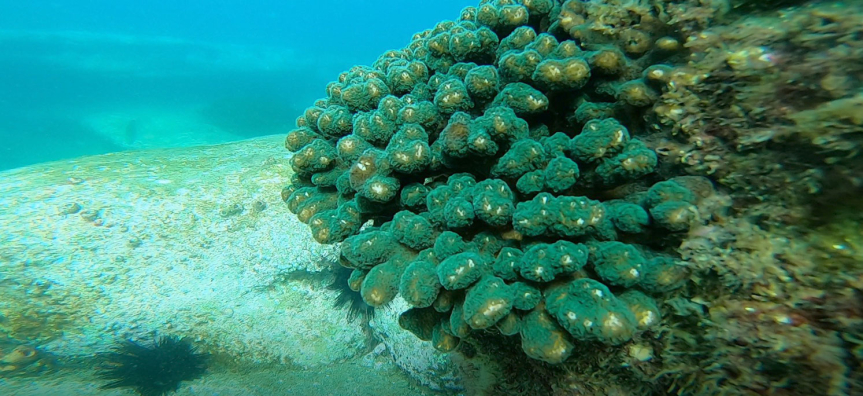
Underwater Photographer John Sear knows a thing or two about coral! This video contains some fascinating information about new corals to Cabbage Tree Bay.
Video text transcript
(John is sitting on the rocks overlooking Cabbage Tree Bay. He describes the subtropical coral recently found in Cabbage Tree Bay. The video contains overlay shots of coral with John observing the coral underwater in the bay.)
John Sear: My name is John Sear. I’m a keen scuba diver and underwater water photographer.
Five years amazingly we found these new corals which had not been here before. Ever since then every year we have been watching them proliferate, and its quite incredible because this coral we’ve found is actually a subtropical species. The next nearest colony you’ll find is up near Broughton Island. So this is probably the furthest south that this coral has actually got to and is starting to thrive down here.
Scientists are very interested because this is an example of how climate change may impact the coastline over the years as waters do indeed get warmer.
Today I’m fitting these temperature loggers which will help scientists do some more research and identify what are perfect conditions for the coral to live in and how water temperatures are actually changing around here.
They normally propagate by releasing polyps from the adults onto the surrounding rocks and they grow from there, which makes it a bit of a mystery why this colony is here at all because the nearest ones are several hundred kilometres away to the north. These corals are actually occupying barren pieces of rock which is very good because it is providing a new habitat for other organisms to live amongst the coral. At the moment they are filling an empty niche.
Over time I think we will start to see change - fish life and other invertebrates, things that associate with the coral. As temperatures warm, different species will flourish and the more we find out what’s out here in the bay, the better. Since it’s been made an aquatic reserve, there is a lot more fish found here. The actual numbers of fish is great. The more we understand about the organisms and what’s in here, the easier it will be to protect in the future.
